 Reviewed by
Anton Giuroiu
Reviewed by
Anton Giuroiu
Are you an underground musician trying to come up with new tunes and melodies at home?
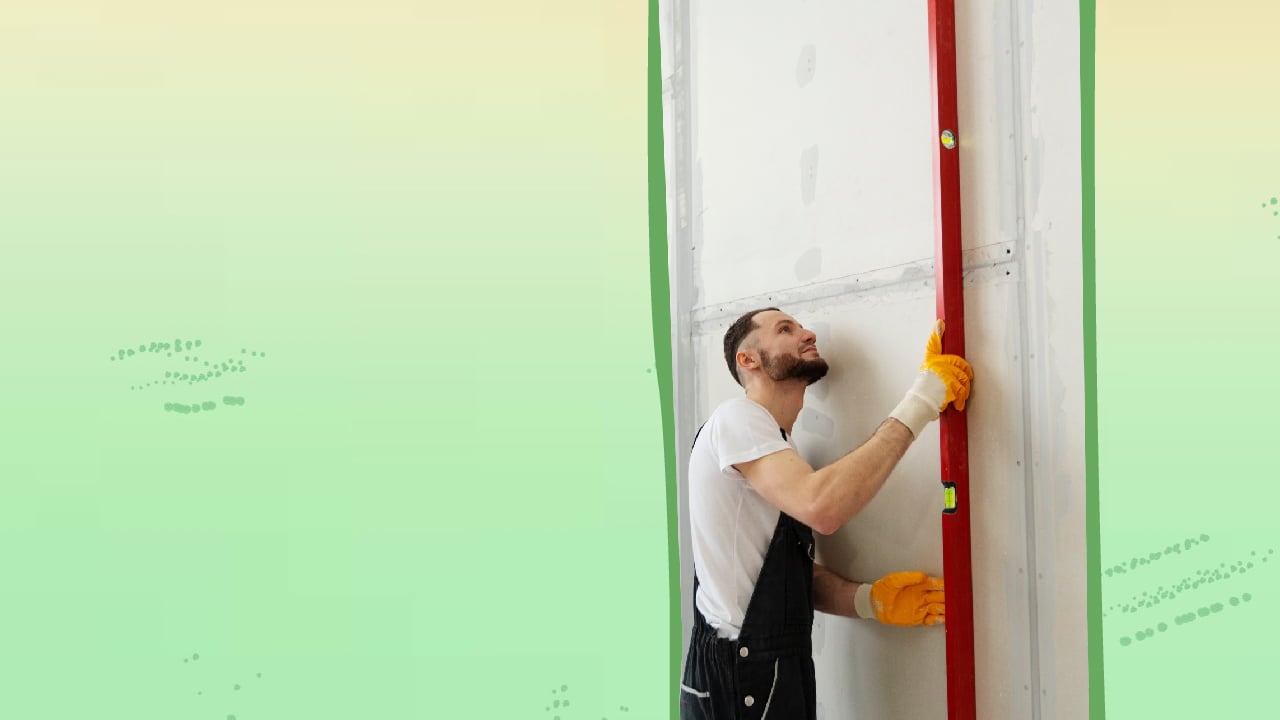
Or are you at the other end of the spectrum, sick and tired of your neighbor’s jamming sessions? Well, in both cases, installing soundproof drywall will help reduce noise and promote better relations with your neighbors!
In fact, soundproofing drywall is the most effective solution to block sound waves. And the best part is that most homeowners can install soundproof drywall themselves without requiring professional skills and knowledge.
That said, let’s get a little more into the nitty gritty of soundproofing drywall and find the best out of the lot…
Best Soundproof Drywalls
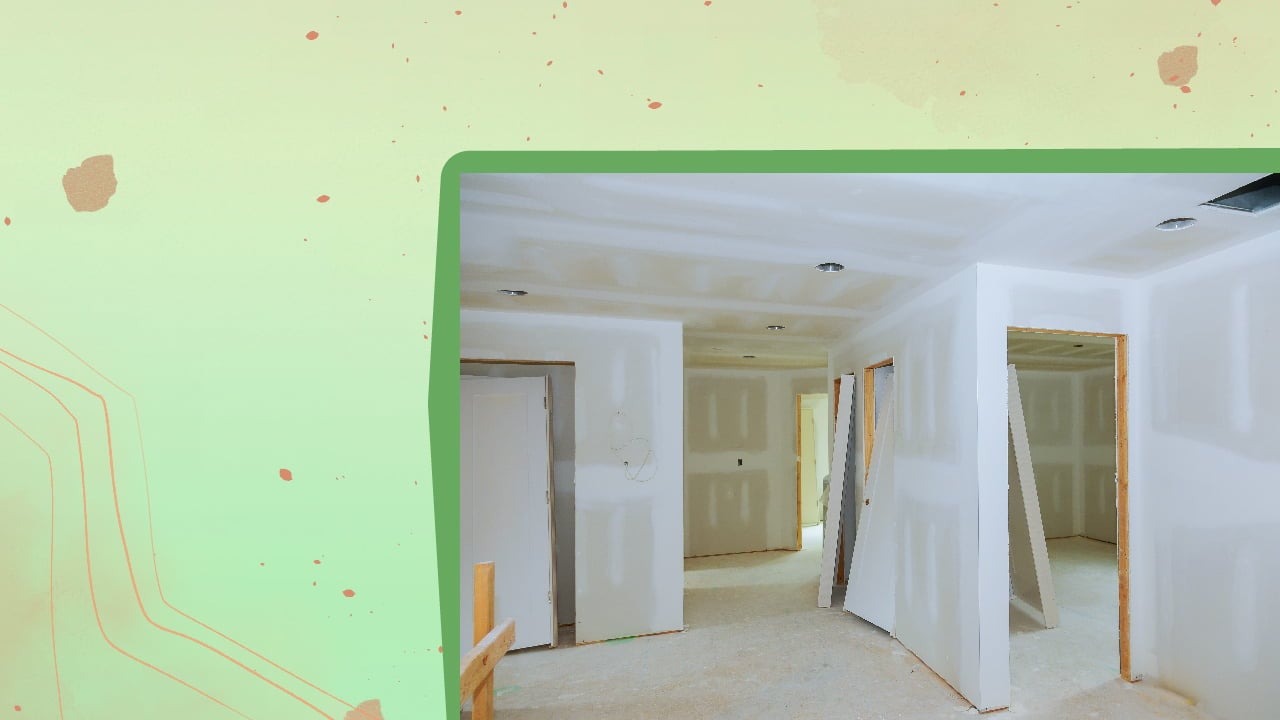
What Is Soundproof Drywall?
Also known as acoustic drywall or pre-damped drywall, soundproof drywall consists of multiple layers of standard drywall made with a combination of clay, mica, mineral gypsum, and two layers of paper. Additionally, it contains internal sound-deadening barriers usually made of ceramic/viscoelastic.
As sound travels through hard surfaces, the soft layers act as sound-absorbing materials, making soundproof drywall better than just multiple layers of drywall.
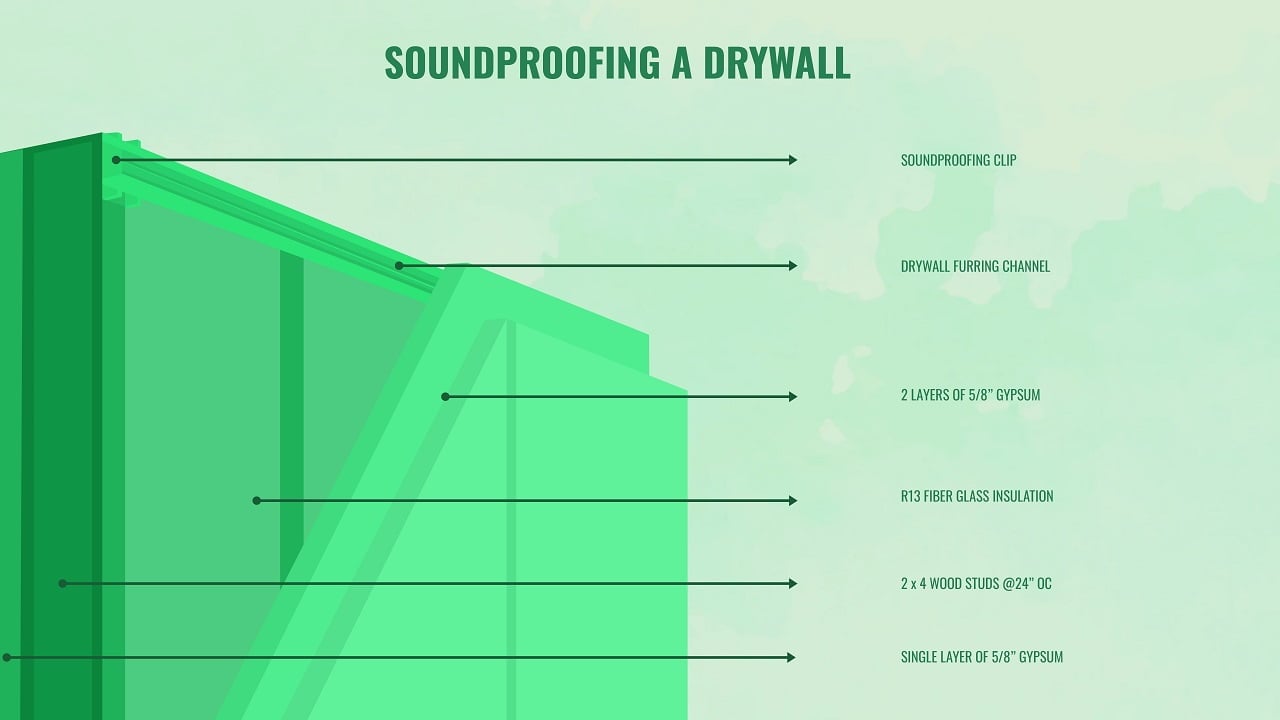
How Does Soundproofing Work?
The speed of sound is 343 m/s (1,230 km/h; 767 mph), and it travels as waves from the source to the surrounding area. Contrary to how light travels in shorter waves, sound consists of longer wavelengths too, which can diffract around walls as well as travel through the tiniest air gaps.
Moreover, unlike light, which only travels through specific media, sound can traverse through most solid materials without much change in its form and volume. Notably, metal is a superconductor of sound as it can transmit sound waves at a speed of 21,460 km/h (13,330 mph).
Sound waves are basically vibrating air particles that reach our eardrums, making them vibrate. These vibrations are “heard” as sound, so larger vibrations create louder sounds. As such, soundproofing involves adding mass and density to an area to eliminate sound transfer.
Sound Transmission Class (STC)
Developed in 1961, Sound Transmission Class (STC) is a rating given to structural surfaces based on how sound vibrations travel through them. Usually, internal walls boast an average STC of 40, while hotel walls may have an STC of 60 or more.
Given below are the STCs by audio distinguishability, STC ratings, and the level of sound that can be comfortably heard through them:
| STC | What you can hear at this level* |
|---|---|
| 25 | Soft speech can be heard and understood |
| 30 | Normal speech can be heard and understood |
| 35 | Loud speech audible but not intelligible |
| 40 | Loud speech audible as a murmur, heard but not understood |
| 45 | Loud speech can be heard, the threshold at which privacy begins |
| 50 | Loud sounds can be heard but faintly, indistinguishable |
| 60+ | Good soundproofing starts here; most sounds do not disturb neighbors |
| *Values in this table relative, as they are influenced by background noise levels in the receiving room, the greater the better perceived sound insulation | |
Accordingly, it is imperative to know the STC score of soundproof drywall while choosing one for your room. However, you must remember that not all sounds are measured by the STC scale, as the range is at the standard decibel level of the human voice (125-4000 Hz). As such, to prevent very low-frequency and high-frequency sounds from traveling, you must consider other measures.
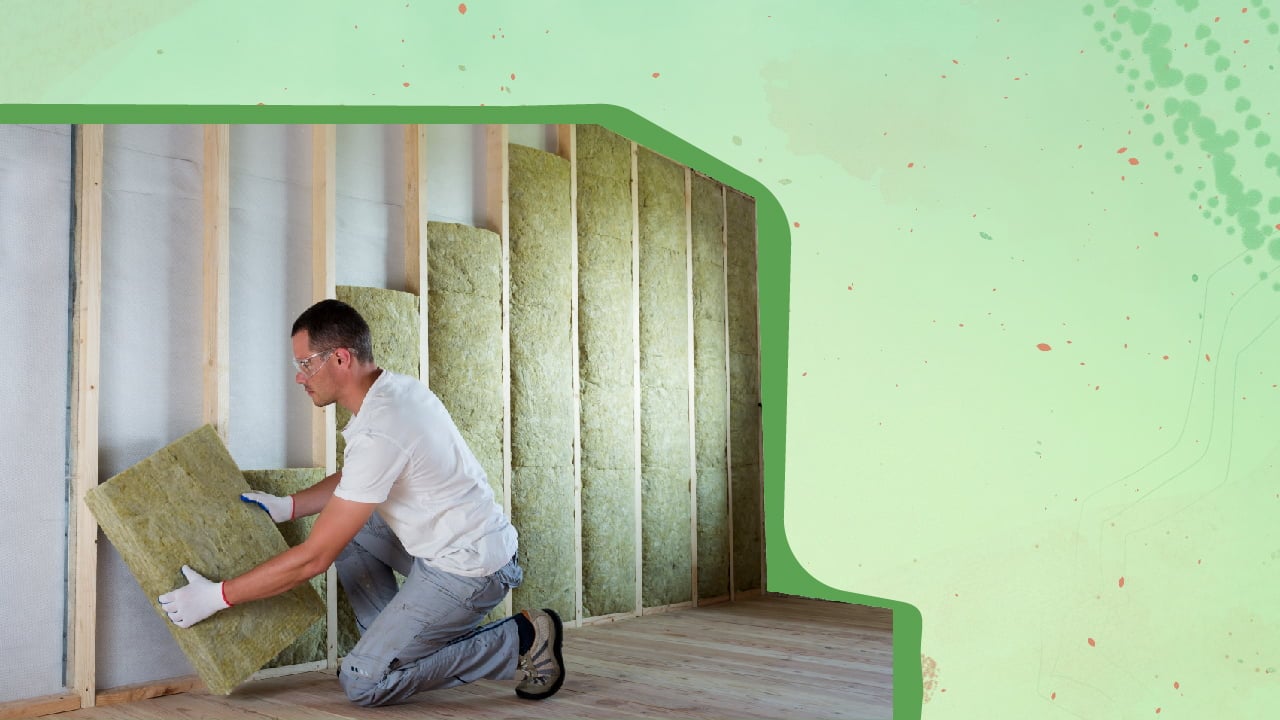
How Does Soundproofing Drywall Reduce Sound Transfer?
1. Dampening
Soundproof drywalls act as dead panels, which is imperative to reduce sound transmission. However, they become more effective when used with a sound-damping compound like Green Glue. Basically, Green Glue imitates natural rubber and absorbs sound vibrations. You can further employ fiberglass sound insulation to the soundproofing drywall panels to add approximately ten more points to the STC rating.
2. Insulation
According to the relationship between mass and sound, the higher the mass, the lower the frequency of vibration. As such, heavier interior walls ensure better soundproofing, so consider using a double layer of 5/8″ drywall to achieve a higher STC rating at a lower cost.
3. Decoupling
Sound waves travel from one surface to another. That’s when decoupling helps separate the drywall adhesive from the steel studs, thereby disrupting the path of sound transmission. Hence, a staggered stud wall makes an effective sound barrier.
4. Absorption
You can use a variety of sound-absorbing materials in your wall assemblies to reduce noise. Some of these materials are viscoelastic foam, rubber, fiberglass, mass-loaded vinyl (MLV), etc.
Best Drywall For Soundproofing
1. QuietRock Drywall
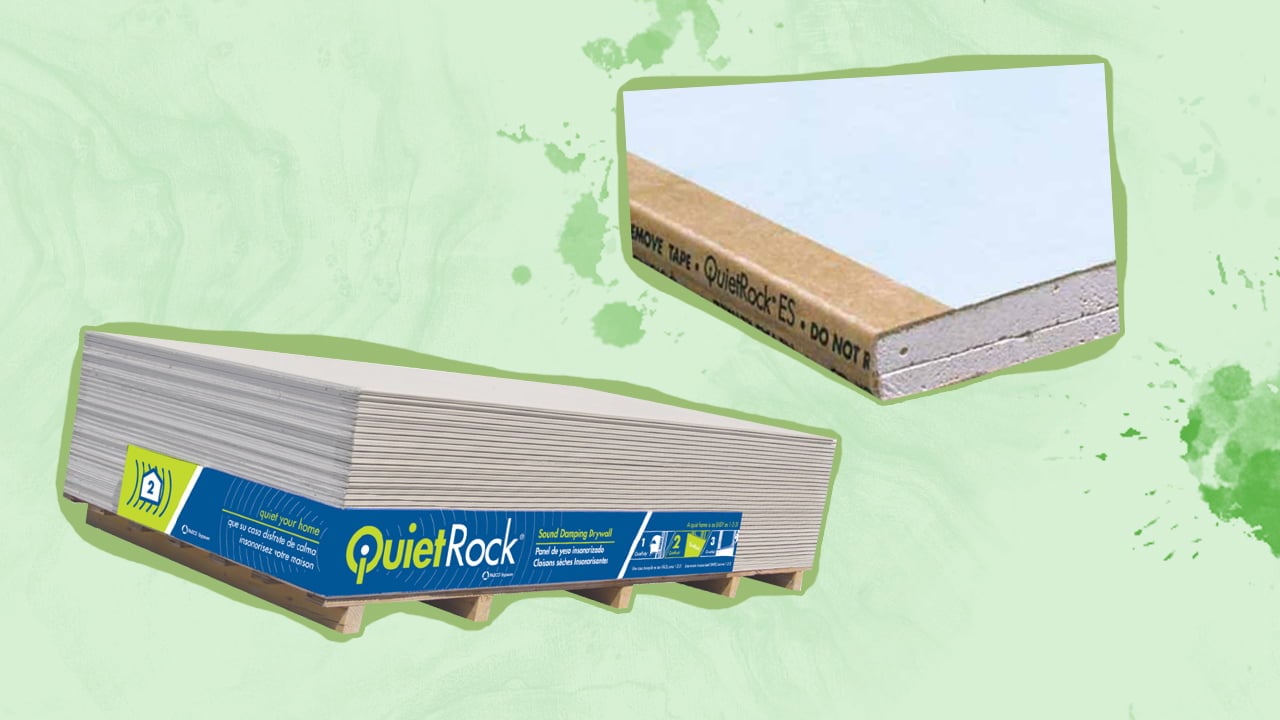
Known as the first sound-dampening drywall, QuietRock drywall is a popular pick among homeowners who wish to maintain privacy. The brand has been in the industry for almost two decades, so it is no surprise that you’ll find multiple drywall options catering to varying needs.
Plus, these soundproof drywall panels are easy to install, making them suitable for beginners or DIY enthusiasts who wish to try their hands at framing (construction). All QuietRock drywall panels come with a tapered edge too.
Depending on your budget, you can opt for QuietRock EZ Snap or QuietRock 545, the former being a budget buy while the latter is a premium pick. However, I must add that QuietRock 545 offers the ultimate amount of soundproofing (goes up to 80 STC), which is, of course, favorable but not always required by regular homeowners.
In fact, this high-end drywall for soundproofing is often used in studios and movie theaters and not in residential areas.
Thanks to the three-layered construction of QuietRock soundproof drywall, they are much easier to install than traditional drywall. You will need minimal effort and time to snap the drywall panels into place.
Speaking of construction, the noise-reducing drywall features two layers of gypsum drywall with a viscoelastic polymer in between. The middle layer acts like a rubber compound, thereby increasing viscoelasticity and blocking sound waves of varying frequencies.
Overall, QuietRock boasts a better STC rating than the standard drywall. So, try covering the entire wall with these panels for the best result.
| Quietrock Panels | Thickness | Width | Length | Weight | Core | STC* |
|---|---|---|---|---|---|---|
| EZ Snap | ⅝” | 48” | 8’,9’,10’ | 2.6 lbs/ft2 | QRES/Type X | 48-60 |
| EZ Snap Mold Resistant | ⅝” | 48” | 8’,9’,10’ | 2.6 lbs/ft2 | QRES/Type X | 48-60 |
| QuietRock 510 | 1/2” | 48” | 8’,9’,10’12’ | 2.13 lbs/ft2 | QR510/Regular | 47-69 |
| QuietRock 530 | ⅝” | 48” | 8’,9’,10’12’ | 2.88 lbs/ft2 | QR530/Type X | 52-74 |
| QuietRock 530RF | ⅝” | 48” | 8’,9’,10’12’ | 2.88 lbs/ft2 | QR530/ Type X | 52-74 |
| QuietRock 545 | 1 ⅜” | 48” | 8’ | 6.25 lbs/ft2 | QR545/Regular | 60-80 |
| *STC: The variation is influenced by the frame material type (wood or steel). Wood frames perform better acoustically and thus produce higher STC scores. | ||||||
2. National Gypsum SoundBreak Board
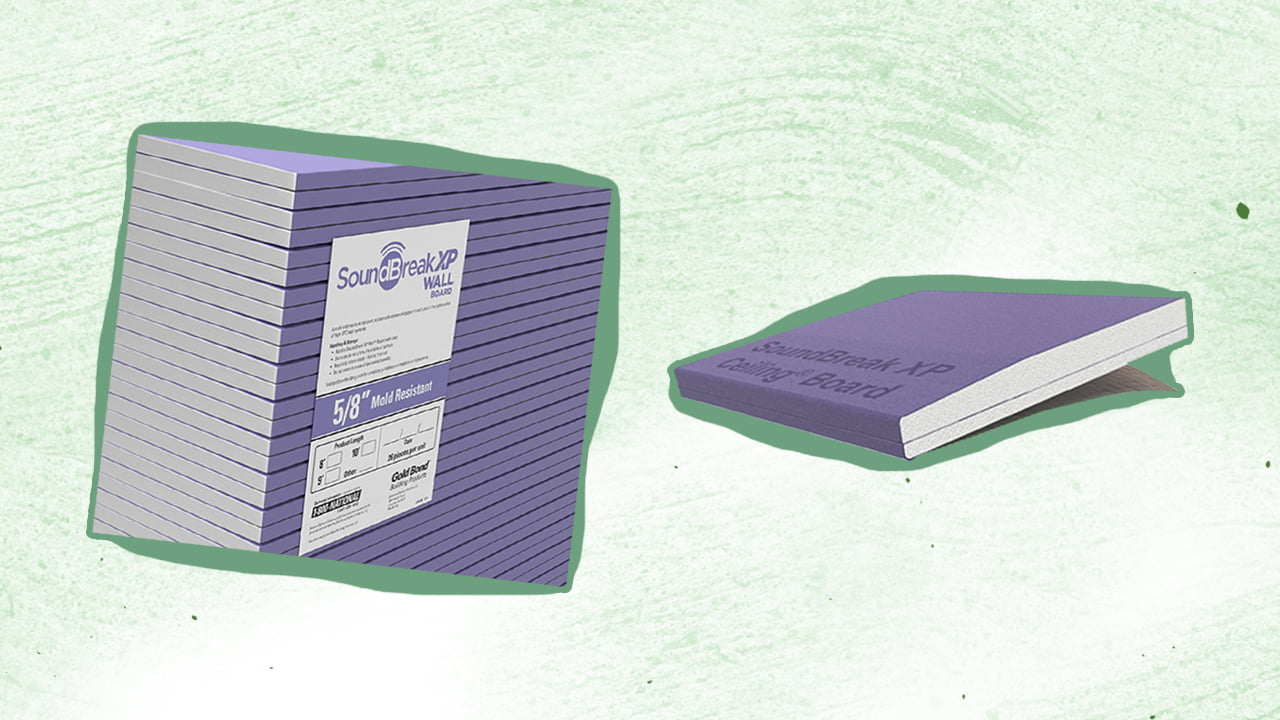
National Gypsum is yet another brand that’s slowly emerging as a popular choice for soundproof drywall, the panels are a Gold Bond building product and they offer the Gold Bond Soundbreak acoustical panel range.
The brand offers a variety of sound-dampening drywall, but I recommend Sound Brake XP 1/2 inch Wall Board for those on a budget. However, if you’ve got more to spare, Sound Break XP Ceiling Board 3/4 inch is a high-quality drywall for soundproofing commercial spaces. The paper in the Soundbreak panels is made from 100% recycled material and is resistant to mold, mildew, and moisture.
Generally, any National Gypsum panel boasts an STC rating of 64, thereby effectively absorbing sound transmission despite the budget-friendly price.
| National Gypsum Panels | Thickness | Width | Length | Weight | STC* |
|---|---|---|---|---|---|
| SoundBreak XP Wall Board | ½” | 48” | 8’,10’ | N/A | 39-51 |
| SoundBreak XP Wall Board | ⅝” | 48” | 8’,10’ | N/A | 43-63 |
| SoundBreak XP Ceiling Board | ¾” | 48” | 8’,10’ | N/A | 59-60 |
| SoundBreak XP Retrofit Board | 5/16” | 48” | 8’,10’ | N/A | 36-53+ |
| *STC: The variation is influenced by the frame material type (wood or steel). Wood frames perform better acoustically and thus produce higher STC scores. | |||||
3. CertainTeed SilentFX Panels
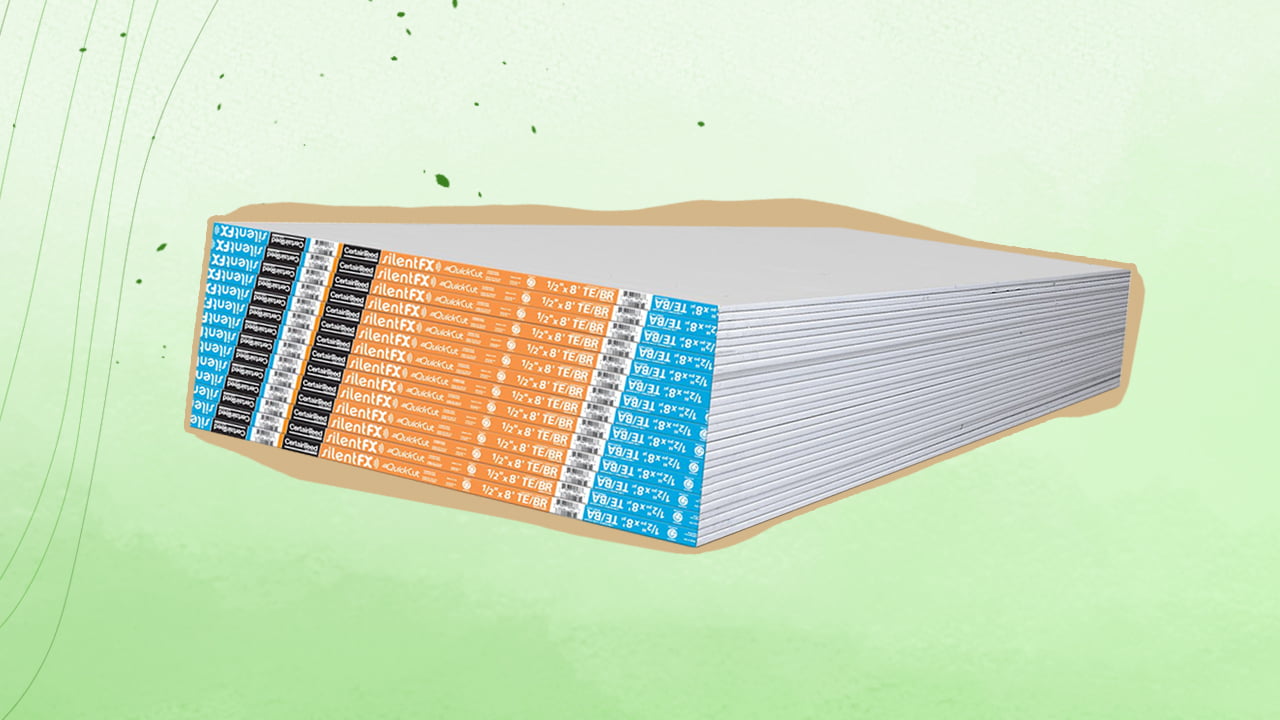
Best known for its acoustic panels, Silent FX QuickCut, CertainTeed is another brand you can consider. Just as the Quietrock, both variants are offered with tapered edges.
Its bestseller offers a width of ⅝ inches and is easy to install, almost like the soundproof drywall panels from QuietRock. Plus, it is a fire-resistant board that can absorb airborne sound fairly well, although not as efficiently as QuietRock 545.
| CertainTeed Panels | Thickness | Width | Length | Weight | STC* | |
|---|---|---|---|---|---|---|
| SilentFX Quickcut | ½” | 48” | 8’,9’,10’12’ | 2.1 lbs/ft2 | 41-54 | |
| SilentFX Quickcut Type X | ⅝” | 48” | 8’,9’,10’12’ | 2.8 lbs/ft2 | 40-64 | |
| *STC: The variation is influenced by the frame material type (wood or steel). Wood frames perform better acoustically and thus produce higher STC scores. | ||||||
4. CertainTeed Type X Drywall

Type X drywall is another common pick from CertainTeed, more so because it offers the best of both worlds - soundproofing and fireproofing. Both regular SilentFX and Type X gypsum boards meet the ASTM C 1396 standard specification. However, the regular drywall is made with gypsum, which provides natural fire resistance but is not fire rated.
Type X drywall has special core additives that make it fire-resistant, the fire-resistant board boasts a thickness of ⅝ inches, offering a dense layer of protection. In fact, it is denser than paper and gypsum drywall. Type X boards have a UL/ULC marking on the back of each board to confirm the fire-resistance rating.
For best results, I recommend using a double type X 5/8″ drywall with 3-1/2″ of insulation and steel studs on a wood stud wall. Coupled with the green glue between the layers of drywall, you can get two hours of fire resistance and amp up the STC rating to 58.
| Drywall Panel | Thickness | Width | Length | Weight | STC* |
|---|---|---|---|---|---|
| CertainTeed Type X Gypsum Board | 5/8" | 54" | 8’,9’,10’12’ | N/A | 50+ |
| *STC: The variation is influenced by the frame material type (wood or steel). Wood frames perform better acoustically and thus produce higher STC scores. | |||||
5. Multiple Layers Of Traditional Drywall
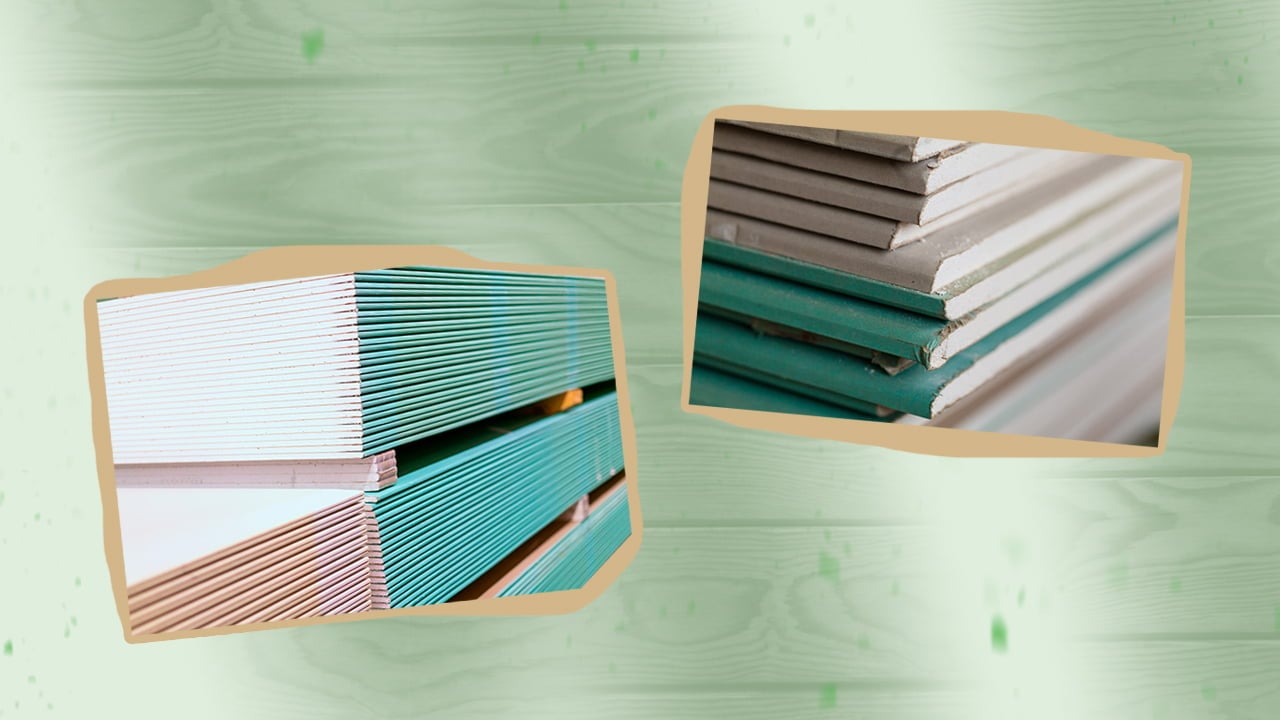
Of course, if you have standard drywall lying around the house, you can use layers of the existing drywall to soundproof your room.
We suggest using 5-8 layers of existing drywall panels to close any air gaps that may allow sound transfer. However, doing so will shrink the size and floor space of the room and can add a lot of stress to the walls and ceilings.
Moreover, using layers of standard drywall sheets can get expensive. Not to forget, stacking standard drywall layers will take a lot more effort and time than using a single layer of drywall for soundproofing. As such, if you hire professionals for the job, using layers of traditional drywall will become all the more expensive.
How To Choose The Best Drywall For Blocking Sound Waves
Knowing the brands that manufacture the best soundproof drywall is just half the journey completed. Next comes understanding the factors you must consider to choose the appropriate drywall for soundproofing. Here are some that I keep in mind while buying soundproof drywall…
1. Installation Process
Anyone can install drywall with a few instructions, so there is no brand that particularly stands out in this aspect. However, if you choose to install more than one layer of regular drywall, the process will become relatively challenging.
I recommend going for soundproofing drywall panels instead of alternatives, especially for beginners who have no knowledge of construction. You’ll be saving a lot of time and energy.
2. Durability
Soundproofing drywall from the aforementioned brands is known to be durable. And if you add more soundproofing material, the drywall will become tougher and more resistant to damage. In the case of accidents, too, soundproof drywall can be repaired easily.
3. Cost
Among the brands I recommended, QuietRock is the priciest, with many high-end variants available for commercial soundproofing purposes. But remember that while it may be difficult to resist the “best” drywall for soundproofing, it may not always be required, especially in residential areas.
Coming to installation, most professionals will charge similar rates, depending on the number of layers of drywall you plan to use. Overall, I suggest checking the building materials of the drywall you choose and analyzing whether the total costs will be worth it.
4. Soundproofing Preferences
Ask yourself the reason for soundproofing your space. Is it because you want a quiet space for yourself, isolated from the rest of the household? Or is one side of the house facing the traffic and the hustle and bustle of city life?
Whatever the reason may be - ensure you research soundproof drywall, the different frequencies each type of drywall can block, the installation process, and more. Checking customer reviews of the products will also help get a clearer picture of the quality and durability of the soundproofing drywall.
Moreover, if you’re looking to cut down distractions and promote productivity in a workspace, consider sound masking for the best results.
5. Frequency Of Use
If you’re considering soundproofing a room that is used often, you may want to invest in a premium option like the relatively expensive QuietRock drywall. On the contrary, if it’s a room that is used, say, once a week, you can simply add standard drywall layers.
6. Other Factors To Keep In Mind
When installed correctly, your wall assembly should be able to prevent noise and resist fire. On that note, you must ensure a gap between the soundproof drywall and the adjacent walls and ceiling. These gaps can be filled with acoustic caulking for effective noise reduction.
Moreover, switch boxes, heating pipes, vents, and other fixtures can transmit sound waves. So, I suggest using putty pads for sound damping. Also, note that resilient clips and channels can reduce sound by 12-15 STC points.
How Much Does Soundproof Drywall Cost?
Compared to standard drywall, soundproof drywall costs higher, around $50, as opposed to a $10-dollar standard drywall. But when I say that opting for soundproof drywall is more cost-effective, I mean using a single layer of it, whereas you’ll require more layers when using regular drywall.
At the end of the day, however, it comes down to your preference. If your space is relatively quiet anyway, adding a layer of traditional drywall or using soundproof curtains may do the trick!

Conclusion
The best drywall for soundproofing will definitely work better than your existing sheetrock. Although the material costs may be considerably high, it is a small price to pay for a tad bit of privacy!
Not to forget, high-quality drywall offers significant fire resistance and water absorption and prevents mildew growth. As a result, soundproofing your walls can indirectly help safeguard your health and improve your quality of life.
Finally, I recommend installing soundproof curtains, window shutters, and rugs on the entryway to soundproof your doors and windows further.
